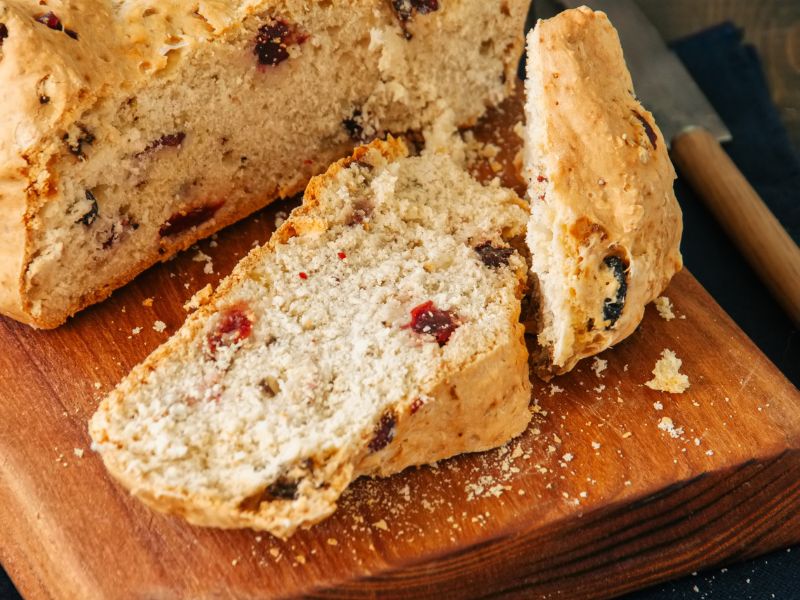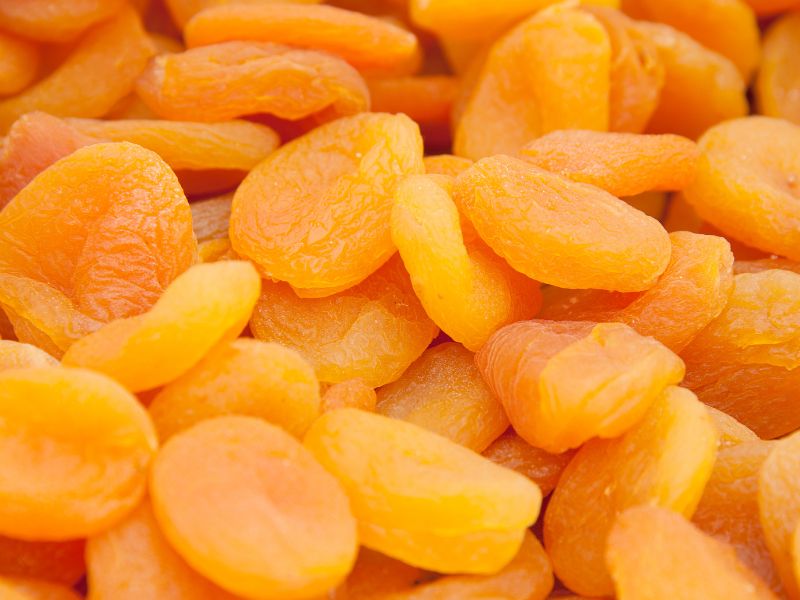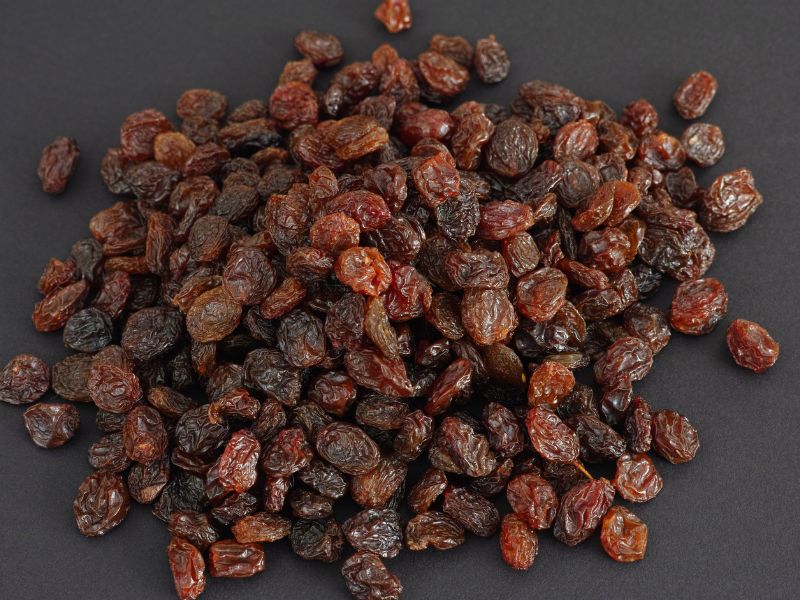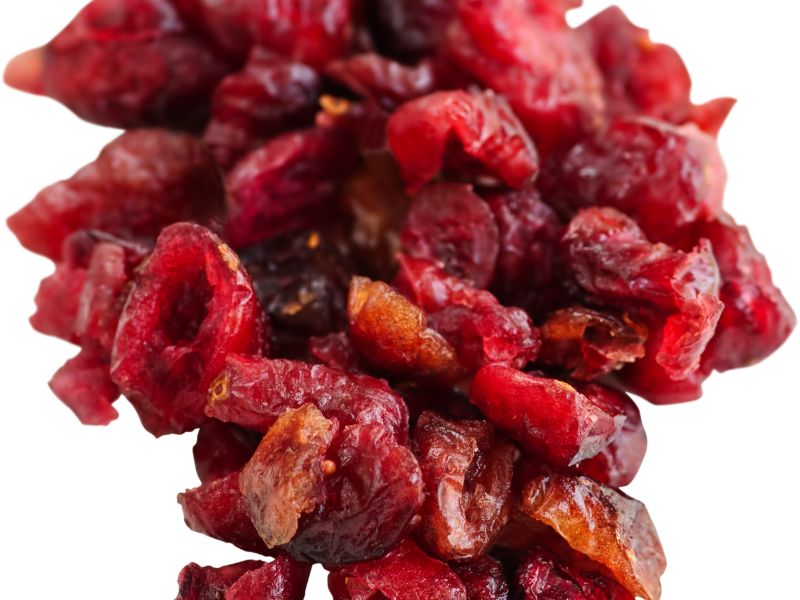Dried fruit can provide wonderful flavor and texture to all kinds of baked goods like cookies, cakes, breads, muffins, scones, and more. Raisins, cranberries, cherries, apricots – they all lend sweetness, chewiness, and concentrated taste. But do you need to soak dried fruit before baking? There are pros and cons to consider.
Do You Need To Soak Dried Fruit Before Baking?
It depends! Soaking dried fruit before baking can help rehydrate and soften the texture, boost flavor, and prevent issues like sinking and burning during baking. However, soaking does take extra time and isn’t always necessary, as most recipes will turn out fine using dried fruit straight from the package. While not required, soaking can take your baked goods to the next level by intensifying the flavor and juiciness of the dried fruits.
Why Soak Dried Fruit?

There are a couple of reasons why you may want to soak dried fruit before adding it to your batter or dough:
Rehydrates the Fruit
Drying fruit removes most of the moisture, which concentrates flavor and allows the fruit to be preserved. However, this makes the dried fruit tough and chewy. Soaking rehydrates the fruit, allowing it to soften up. This can help the fruit blend into the batter or dough more easily.
Enhances Flavor
In addition to softening up the texture, soaking dried fruit can also help intensify its flavor. A brief soak can help bring out the natural fruit flavor. However, a long soak may dilute it.
Prevents Sinking or Burning
Dried fruit soaks up more moisture than the batter or dough around it. This difference in moisture can make the fruit sink or burn during baking. Soaking the fruit first allows it to absorb moisture and prevent these issues.
Improves Appearance
Dry fruit can look shriveled, wrinkly, or dull. Soaking plumps up the fruit so it looks juicier and more appetizing in the final baked good.
Reasons to Skip Soaking

However, there are also some reasons you may want to skip presoaking dried fruit:
Quicker Prep
Soaking dried fruit takes extra time. The fruits must soak for several hours or overnight to fully rehydrate. If you’re short on time, you can skip this step.
Maintains Texture
Part of the appeal of using dried fruit is its chewy, leathery texture. Soaking softens up this texture. If you want to maintain some chewiness in your baked goods, you can add dried fruit directly without pre-soaking.
Avoids Diluting Flavor
Skipping soaking preserves the concentrated, intense flavor of dried fruits. Soaking too long can water down the flavor.
Works Fine Without Soaking
Most recipes will turn out just fine either way. As long as you chop or dice the dried fruit small enough, it will hydrate and bake up sufficiently without needing to be soaked first.
Tips For Soaking Dried Fruit
If you do decide to soak your dried fruit before baking, keep these tips in mind
- Use hot liquid. This helps the fruit rehydrate faster compared to cold water. Boiling water or heated fruit juice works great.
- Allow plenty of time for fruits to become fully hydrated. Let them soak for 2-8 hours or up to overnight.
- For extra flavor, try soaking fruits in a small amount of rum, brandy, whiskey or flavored syrup.
- Make sure to drain the soaked fruit well before adding them to the batter or dough. Excess moisture can throw off the ratios.
- Even after soaking, chop or dice the fruit to help it integrate more easily during mixing and baking.
- If soaking dried fruits in a lot of liquid, you may need to reduce the amount of wet ingredients called for in the recipe.
- Tossing the soaked, drained fruit with a bit of flour can prevent it from sinking or burning.
- Consider the size and type of dried fruit, as larger pieces like apricots, apples, and figs tend to need soaking the most.
- Soak for the minimum time needed to rehydrate the fruit, avoiding excess liquid or long soak times, which may dilute the flavor.
Common Dried Fruits to Soak
Some dried fruits benefit more from soaking than others.
Larger Fruits


Fruits that are larger in their whole form tend to need more hydration through soaking. Examples include:
- Dates – Very hard and chewy when dried, dates soak up liquid to become soft and plump.
- Dried apricots – Apricots shrink significantly when dried, so soaking makes them plumper and juicier.
- Dried figs – Figs can remain very dense and tough when dried, so soaking them is recommended.
- Dried pineapple – Pineapple’s fiber needs to be softened through soaking before baking.
- Dried mango – Rehydrating dried mango brings back its signature tropical flavor.
- Dried apples – Slices of dried apple reconstitute well through soaking overnight.
- Dried pears – Like apples, dried pear slices also benefit from rehydration.
Smaller Fruits


Small fruits like raisins, cranberries, and cherries may not need as much soaking time, but can still benefit:
- Raisins – These shriveled grapes become moist and plump after soaking.
- Dried cranberries – Cranberries hold their shape nicely when dried, which makes rehydrating them through soaking simple and effective.
- Dried cherries – A brief soak adds juiciness back to chewy, dried cherries.
- Dried blueberries – Wild blueberries maintain their shape and texture when dried, allowing them to rehydrate easily with a quick soak.
- Dried strawberries – Rehydrate these for a nice burst of strawberry flavor.
When it comes to soaking dried fruit, timing, and liquid selection can make all the difference. To help determine the best soak time and liquid for hydrating your dried fruit, refer to this handy soak guide:
| Dried Fruit Soaking 101 | ||
|---|---|---|
| Dried Fruit | Soak Time | Liquid for Soaking |
| Dates 🍇 | 8-12 hours | Boiling water, coffee, rum 🍵☕️🥃 |
| Apricots 🍈 | 2-4 hours | Orange or apple juice 🧃🍎 |
| Figs 🍃 | 4-6 hours | Water, apple juice, honey syrup 💧🍯 |
| Pineapple 🍍 | 1-2 hours | Pineapple juice, rum 🍹🥃 |
| Apples 🍎 | 6-8 hours | Apple cider, brandy, cinnamon syrup 🍏🥃 |
| Pears 🍐 | 6-8 hours | Pear nectar, white wine 🍷 |
| Raisins 🍇 | 30 mins – 1 hour | Rum, brandy, water 🥃💧 |
| Cranberries 🍒 | 30 mins – 1 hour | Orange juice, cranberry juice 🧃 |
| Cherries 🍒 | 30 mins – 1 hour | Cherry juice, kirsch liquor 🍒🥃 |
| Brought to You by wearebaking.com | ||
Final Thoughts
Though not required, taking the extra time to soak dried fruit has many benefits, such as improving texture, flavor, and appearance. However, if you find that time is not on your side, you can often get great results simply by chopping up dried fruit and adding it straight into the batter or dough. So try out pre-soaking the next time your baked good calls for some dried fruit and see if you notice a difference!
Here is a recipe for oatmeal raisin cookies that calls for soaking the raisins that you may enjoy. And they would be a great addition to your annual holiday cookie baking.
Please leave me a comment below
And As Always
Keep On Baking!
Taianne
Share The Love
Frequently Asked Questions
When it comes to soaking dried fruit for baking, several common questions come up. Here are answers to some of the top FAQs:
1. Can you soak dried fruit too long?
Yes, it is possible to soak dried fruits for too long. Oversoaking can lead to a mushy texture, potentially altering the desired outcome in baked goods. Generally, a soaking period of 2 to 8 hours is sufficient, depending on the type of fruit and the recipe requirements. For fruits like prunes or apricots, shorter soaking times are often enough, while tougher fruits like dates might benefit from a longer soak.
2. Is soaking dried fruit healthy?
Soaking dried fruit can be considered healthy as it helps in rehydrating the fruits, making them easier to digest. It also tends to enhance the fruit’s flavor and can make the nutrients more bioavailable. However, it’s important to note that the soaking liquid can sometimes absorb natural sugars from the fruits, so if you’re watching your sugar intake, be mindful of this aspect.
3. Which dry fruits should not be soaked?
Most common dried fruits can benefit from soaking, but a few very delicate ones may fall apart if soaked. Berries like dried goji berries and dried elderberries tend to break down easily. Dried coconut and papaya are also prone to disintegrating. These fruits can be added directly to recipes without soaking.

I’m Taianne, the owner and operator behind We Are Baking. Baking my first cake at age 11 hooked me on creating sweet treats. Though my interest faded during childhood, it was rekindled when I married my apple pie-loving husband. I love trying new recipes, tweaking classics, and helping others learn the science and art of baking. I started We Are Baking to share tips, tricks, and favorite recipes I’ve discovered over the years. When not in the kitchen, I enjoy spending time with family and friends. My goal is to inspire others to embrace their creativity through baking. Feel free to contact me with any questions!
Taianne@wearebaking.com


Great article! Gives me all of the information needed to make a prudent choice and without making things complicated. Thank you so much Taianne!
Hi, You are welcome. I am glad that I could help you.